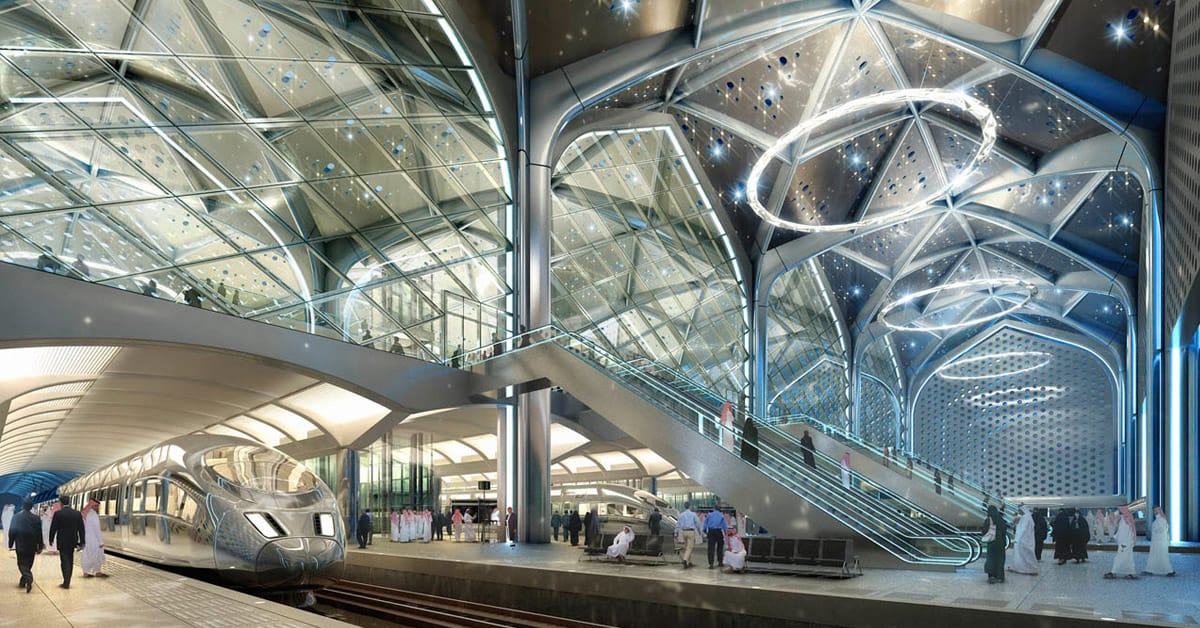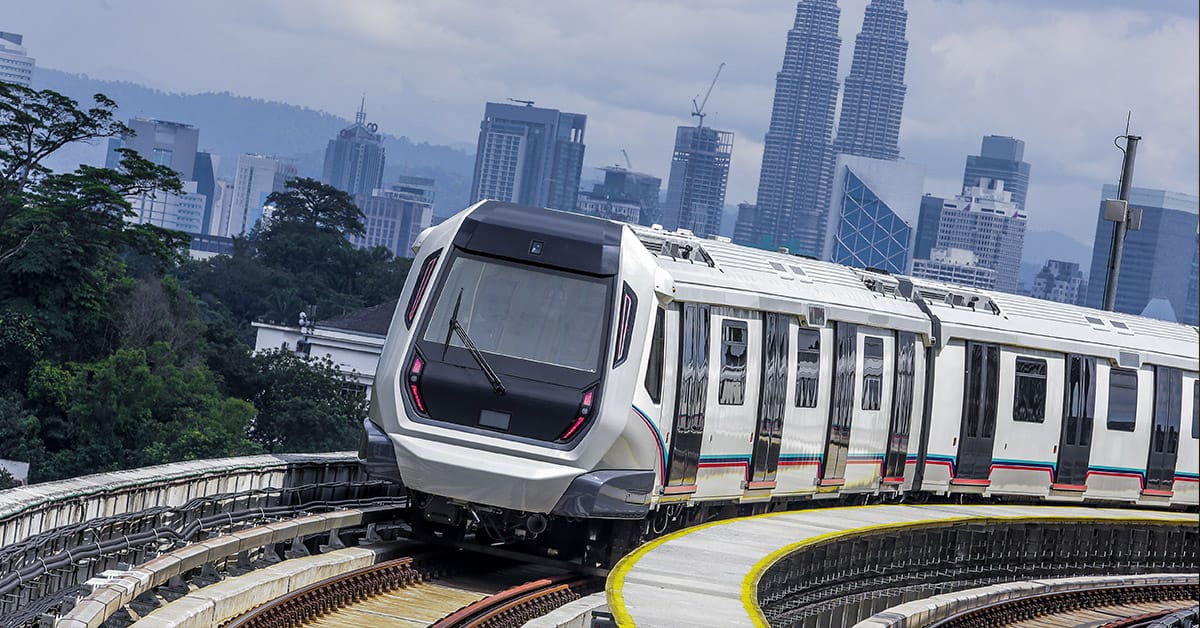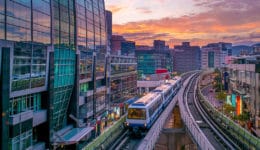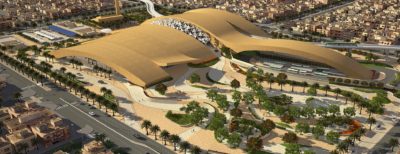 Rendering of a train arriving in the Riyadh Metro’s Western Station, which was designed by Omrania and is currently under construction. Photo © Omrania
Rendering of a train arriving in the Riyadh Metro’s Western Station, which was designed by Omrania and is currently under construction. Photo © Omrania
Public transportation systems are key to managing urban growth. Today’s expanding cities are implementing various types of transit technology to improve quality of life as well as economic and environmental performance.
The first modern metro system was the London Underground, which opened in 1890, and today runs 400 km with 270 stations. By 1900, the cities of Budapest, Glasgow, Chicago, and Paris similarly inaugurated urban railway systems powered by electricity. Differences in scale quickly emerged, as some systems included only a few lines, while others attempted to form a comprehensive network to connect the whole metropolis.
Most of the world’s newest metro systems are both elevated and below ground — and they are opening in Asia. Earlier this year, the airport line of the Taoyuan Metro in Taiwan successfully opened, with at least three additional lines to follow. The year 2016 saw the opening of four new metro systems in the Chinese cities of Dongguan, Fuzhou, Hefei, and Nanning. In 2015 India opened metro systems in Chennai and Jaipur. Although these systems consist initially of a single line served by 10 to 25 stations, they are rapidly expanding to include more lines. At the same time existing metro systems across the world are adding new lines, from New York’s 2nd Avenue Subway to Daegu, South Korea’s Metro Line 3 monorail.
The Arab World’s first major metro system was that of Cairo, which began operation in 1987. The far more technologically sophisticated Dubai Metro, with its fully automated, driverless trains, opened in 2009 and is planned to expand to five lines. However, some of the most ambitious urban transit planning and construction in the world right now is taking place in the fast-growing cities of Saudi Arabia, where new metro systems will shorten the length of commutes and improve air quality and energy efficiency.
The King Abdulaziz Project for Riyadh Public Transport (KAPRPT) — known as the Riyadh Metro — will become the largest public transport system is the Gulf region, comparable in scale to the metro systems of Hong Kong or Chicago when it opens in 2019. The Riyadh Metro comprises six light-rail lines of 178 km with 85 stations, plus 24 local bus routes, three bus rapid transit (BRT) lines, and multiple park-and-ride facilities. Omrania is designing the Western Station, one of four landmark multimodal hubs.
New metro systems are also opening in Saudi Arabia’s western cities. The first line of the Mecca (Makkah) Metro began operation in 2010, with four additional lines in development. This system has special seasonal operational requirements to accommodate the influx of pilgrims around the Hajj. In addition, there are new metro projects currently in the works for the cities of Medina (Madinah) and Jeddah, which are scheduled to open in 2020. These western cities will also be connected by the new Haramain High Speed Rail line (a.k.a. Western rail line) currently under construction.
In just a few years, then, Saudi Arabia will have four working metro systems and a high-speed intercity route, signaling a new era of transportation planning and sustainable urban growth.
















